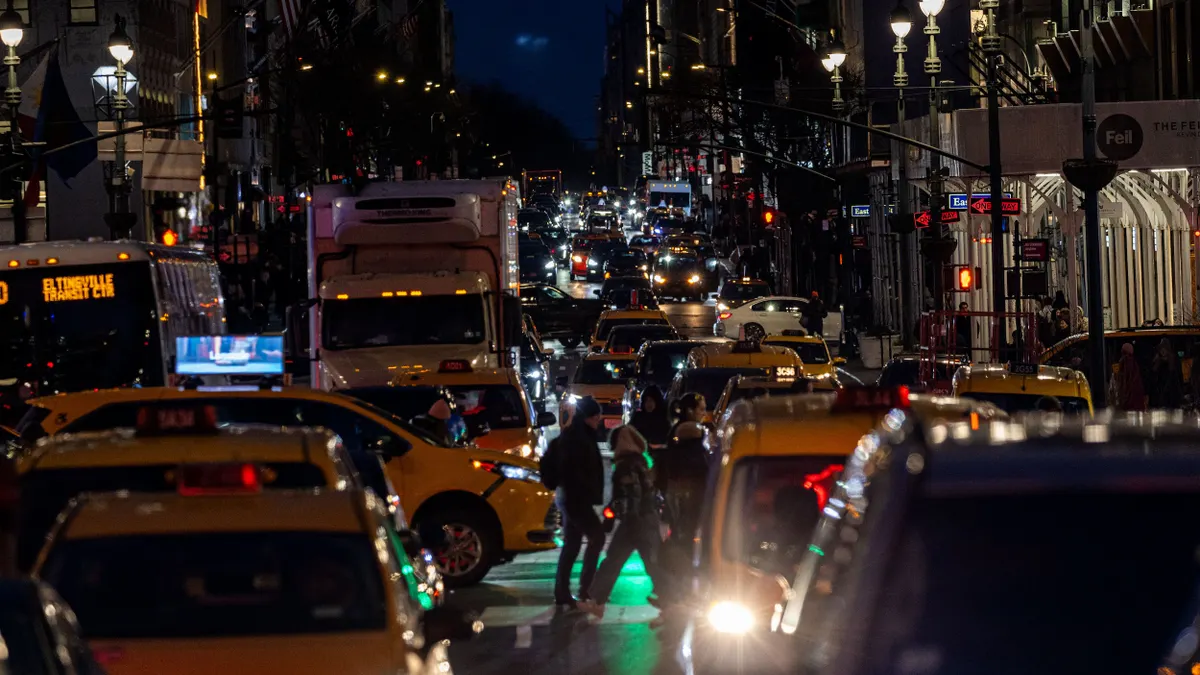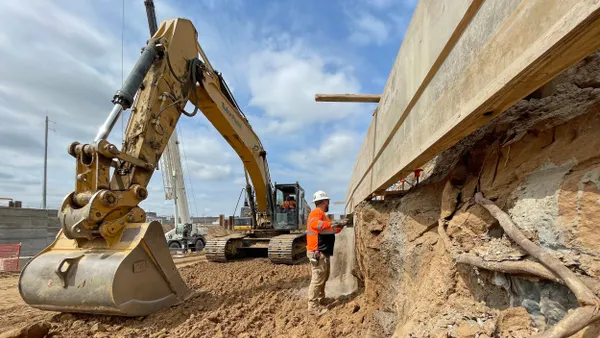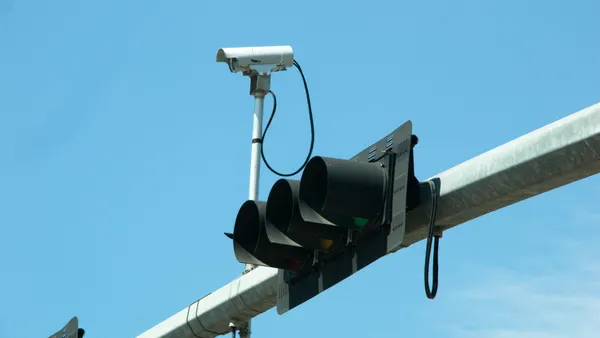Dive Brief:
- A Bay Area Rapid Transit (BART) station in Oakland, CA will test platform "screen doors" as a safety measure, according to Streetsblog SF.
- The doors will remain closed at the edge of a train platform to prevent people from walking or falling onto the tracks. The platform doors open only when an arriving train has fully stopped, allowing riders to enter and exit.
- Transit systems in other countries frequently use screen doors to protect riders, especially in crowded situations, but they haven't caught on fully in the United States.
Dive Insight:
Errant items on the tracks cause big headaches for transit agencies. Sometimes the problem could be as small as a newspaper drifting onto a track and catching fire, but other times lives are at stake if a human ends up on the tracks. Depending on the size and type of item, such an occurrence can lead to service delays, emergency maintenance and investigations.
It might seem obvious for passengers to remain on the platform when they're waiting for a train, but any number of factors could contribute to a person being on the tracks. Some people intentionally put themselves there; suicides by train are relatively rare but are definitely a factor. Chicago experienced an uptick in suicides on its train tracks last year and its transit agencies are working on solutions.
Others intentionally put themselves on the track without the desire to take their life, like the woman who was arrested for performing yoga on the DC Metro tracks and fell dangerously close to the third rail. Also in DC, a tourist reportedly became confused and wandered onto the tracks to cross to another platform, prompting a temporary shutdown to get the woman to safety.
But more often, people find themselves on train tracks against their will. From time to time, people are pushed from the platform, an occurrence that has made the news a number of times in New York. More commonly, platform crowding can cause a person to stumble or be accidentally bumped onto the tracks. That phenomenon has prompted some other countries' transit agencies that experience frequent crowding — such as in China, Barcelona and Paris — to install doors.
Platform screen doors haven't yet made it big on transit in the United States, although New York announced a pilot at one station in the fall. The technology isn't completely unknown domestically though, because quite a few U.S. airports already use platform doors on their tram systems. Transit agencies across the country certainly will be watching BART's pilot in Oakland in the coming months to see if screen doors could be an option to take their own systems' safety to the next level.










